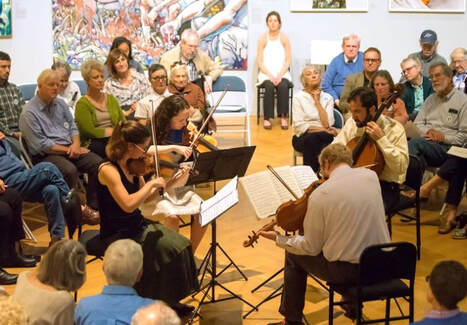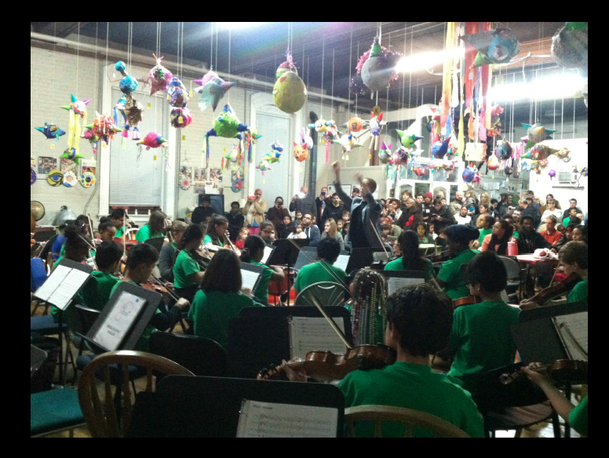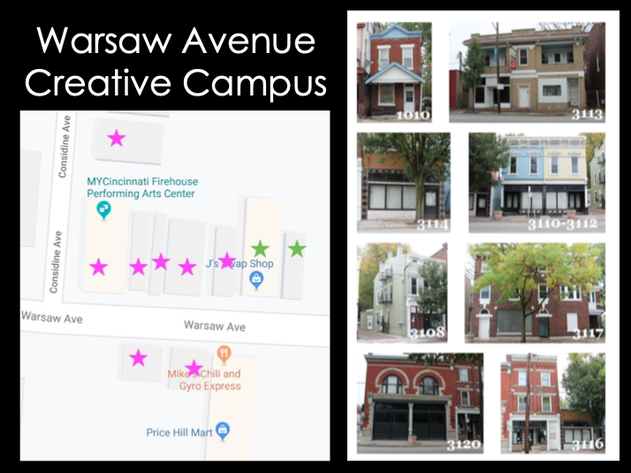|
My full-time position at NEC, Associate Dean for Arts Leadership, will be eliminated at the end of the month. I have been invited to continue my work exploring the intersection of artistry, leadership, and sustainability as a part-time Entrepreneurship faculty member. This year, I will teach a class about artistic project planning and lead the two institutes that I created, Understanding El Sistema and Building a Chamber Music Residency. These past seven years have been an interesting journey, and as I prepare to embark upon my next professional chapter, I have taken some time this summer to reflect. I want to mention several aspects of my NEC experience that are meaningful to me. First, I’ll summarize the journey. I was hired in 2012 to guide the fourth and fifth classes of Sistema Fellows (NEC's five-year investment in training fifty musicians to create social change through music education for at-risk youth) through a nine-month leadership and professional development curriculum. This was an exciting time for me that included international travel, passionate group discussions and intellectual adventures, and a seat at the table with inspiring colleagues and experts from across the US and beyond. After the Sistema Fellows Program ended in 2014, I continued to support the fifty Fellows while simultaneously developing opportunities to share aspects of the Program's curriculum more broadly. This included piloting new courses and institutes at NEC, such as Fundraising for Musicians, Understanding El Sistema, Building a Chamber Music Residency, and the reason that this blog exists, Building a Community-based Residency. In addition to supporting the Sistema Fellows, now fanned out across the country, I also enjoyed being a mentor, advocate, and advisor to musician-led initiatives such as musiConnects, Newport String Project, Little Opera, and the Iris Music Project. I built relationships with professional musicians and offered them something valuable: sustained access to professional development and capacity building resources. What am I grateful for and what did I learn? I was fortunate to have the opportunity to thoroughly investigate social change through music education with idealistic Sistema Fellows who have created ambitious and exemplary community-based programming in places like Cincinnati, Juneau, and Ventura. I’m grateful for the unusual amount of time that I was able to dedicate to creating and refining strategies for working at the intersection between purpose, artistry, and sustainability. I supported the efforts of emerging professional musicians—especially NEC alumni—who have created initiatives as diverse as Castle of our Skins, the Merz Trio, Palaver Strings, and Thread Ensemble. Over regular lunches and coffees, I learned new concepts—and tested my own ideas—through conversations with inspired and generous faculty, such as Tanya Kalmanovitch and Bob Labaree. I appreciated the camaraderie of dedicated and thoughtful colleagues, such as Tanya Maggi and Rachel Roberts, who care so deeply about the student experience, and who are always up for imagining next steps in better supporting emerging professional artists. My attempts to realize Leslie Foley’s idea of building a revenue generating arts leadership certificate, based on the Sistema Fellows Program curriculum, were ultimately unsuccessful. Still, I appreciate having the opportunity to think deeply about leadership and to experiment with applying my ideas (influenced by Nina Simon, Diane Ragsdale, Eric Booth, and Kenneth Foster) to a conservatory environment. I took advantage of my platform at a leading conservatory to connect with far-flung colleagues. Conversations that had begun with Bob Labaree’s white paper pondering our collective future, informed by economic and societal forces at work beyond our walls, led to rich Music in 2050 discussions at public lectures and roundtable events. Importantly, it wasn’t only people from the arts industry in the conversation. After the Sistema Fellows Program ended, I was sad to lose the opportunity to work in daily collaboration with the wonderful Virginia Hecker. However, I benefited professionally and personally from unprecedented flexibility to pursue my work largely on my own terms. For instance, I re-connected with my roots as a chamber musician, spending a luxurious week annually at Avaloch Farm Music Institute, preparing Beethoven quartets (Opus 127, 130, 131, 132) for performances (with Ealain McMullin and Emmy Holmes-Hicks, founding violinists of the Newport String Project). What am I still working on and what’s next? Time and again, these last seven years have brought me face-to-face with the following reality: There is a tension between 1) providing emerging artists with the freedom to fully immerse themselves in honing their craft and 2) preparing them with strategies and skills for navigating the realities of their professional lives. This tension is nothing new, but it will continue to intensify, mirroring the broader societal challenge: If the system only works well for an advantaged minority, at what point do we risk our carefully cultivated image of success by acknowledging that there is a significantly larger underclass—a supermajority—that is facing a vastly different experience from the often idealized (and, frankly, less than three-dimensional) version of professional success that they have been prepared for? Meanwhile, I’ve got plenty of big questions and interest areas to continue to explore. I’m looking forward to continuing to support the work of musician-led initiatives negotiating what it means to be relevant to the civic life of a community, including building "social cohesion and trust." Another Diane Ragsdale quote that has been pinned to my MacBook's desktop in recent years is about the goal of creating empathic relationships and understanding of self and other. I’m thinking more deeply about, in the words of Richard Heinberg, the “opportunity and duty” of being an artist in an increasingly tumultuous 21st century. The unique value that musicians can contribute to our world is often ephemeral. As is the pursuit of recognizing, shaping, measuring, and sustaining this valuable contribution. While I seek to define the next steps for me in this pursuit, I appreciate the advice contained in this Gwendolyn Brooks poem that a colleague shared with me earlier this year.
1 Comment
One of the most important (and under-reported) experiments in the Creative Placemaking field has been unfolding in Cincinnati's Price Hill neighborhood over the past eight years. In Spring of 2011, cellist Laura Jekel was getting ready to complete the Sistema Fellows Program, a professional development program at the New England Conservatory. The program, a prestigious fully funded fellowship that included a month-long residency in Venezuela, was about training musicians to think differently about music education, and learning to use it as a vehicle for social change and community development. Laura had previously identified Cincinnati as her destination after the conclusion of the fellowship. In March, she made an initial trip to Ohio to see what she could set up for herself. A friend with an urban planning degree recommended that she try to get an appointment with Terry Brundy who worked for the United Way. Laura told Terry her story about wanting to build a youth orchestra program for at-risk kids that would hopefully change their lives and their trajectories. Within a few minutes, Terry was on the phone with Ken Smith, Executive Director of Price Hill Will, one of Cincinnati's several community development corporations (and a United Way grantee). At their initial meeting, Laura didn’t bring anything on paper to show to Ken. She decided that she would just talk to him about her ideas and see where it went. “I just told him what I want to do” and that “this is not a music program, but a youth development program that uses music.” She also told him about her fellowship in Boston, and what she had seen in poor neighborhoods in Venezuela and Los Angeles where vibrant music education programs were creating positive opportunities for local children and their families. Ken asked Laura to return later in the week and bring a proposal so that he could present it to his board of directors. Shortly thereafter, Laura got the green light. Ken offered Laura an office space and supplies, access to health insurance, and the CDC's 501c3 status. She would have to raise the funds to pay herself--and for almost everything else--on her own. This past June, I invited Laura to return to NEC to present the story of building MYCincinnati, her after-school orchestra program (Part 1) in Cincinnati's Price Hill. For me, the story gets even more interesting in Part 2 ("Creative Placemaking") as she begins to explore the ways in which her work in Price Hill is having a positive impact on the greater community, well beyond the kids participating in her orchestra. And in Part 3, Laura explains how her work over the past eight years has helped to catalyze new community development--both economic and social--including planning for a Warsaw Avenue Creative Campus, a "youth and family-centric campus for residents" based on the CDC's decision to strategically invest in local artists and arts programming. Please enjoy the following excerpts from Laura's presentation, posted in three separate videos, below. |
AboutSharing student project documentation and, more recently, my own. Archives
June 2022
Categories |







 RSS Feed
RSS Feed
